Crafted for Everyday Life, Honed by Tradition – Step Into Japan’s Finest Craftsmanship in Saitama
features
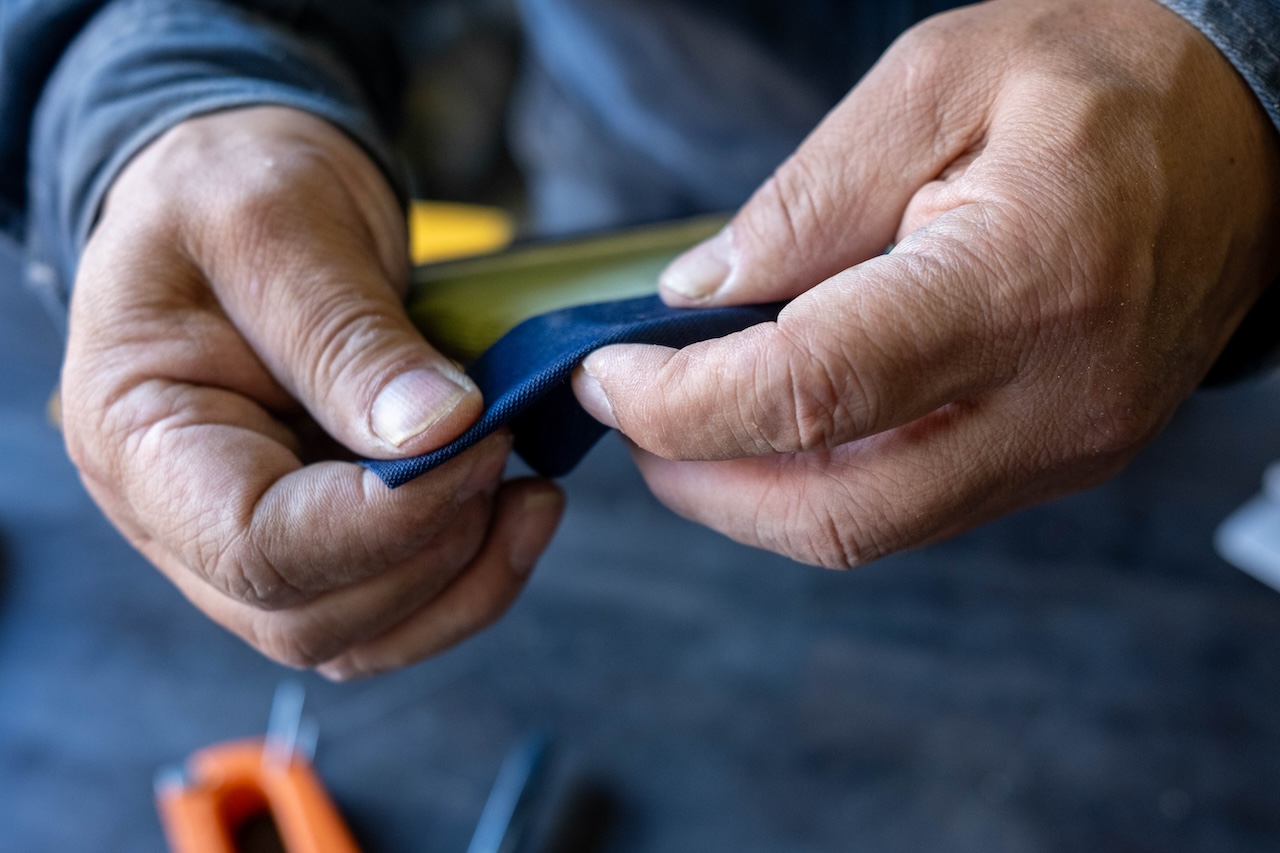
This article will introduce you to hands-on traditional craft experiences and must-visit attractions in Kasukabe and Yoshimi in Saitama Prefecture. Kasukabe City, best known as the setting for the popular Japanese anime “Crayon Shin-chan,” has long been a major transportation hub and a thriving post town. Its rich natural resources helped foster traditional crafts such as paulownia chests and oshie-hagoita (decorative paddle boards). Yoshimi Town is not far from Kasukabe, and it is home to the famous Yoshimi Hyakuana (Yoshimi Hundred Caves) and workshops that produce one of Japan’s most culturally significant products, the tatami mat.
Updated on:2025.06.17
A 300-Year-Old Craft Passed Down in the Historic Post Town of Kasukabe
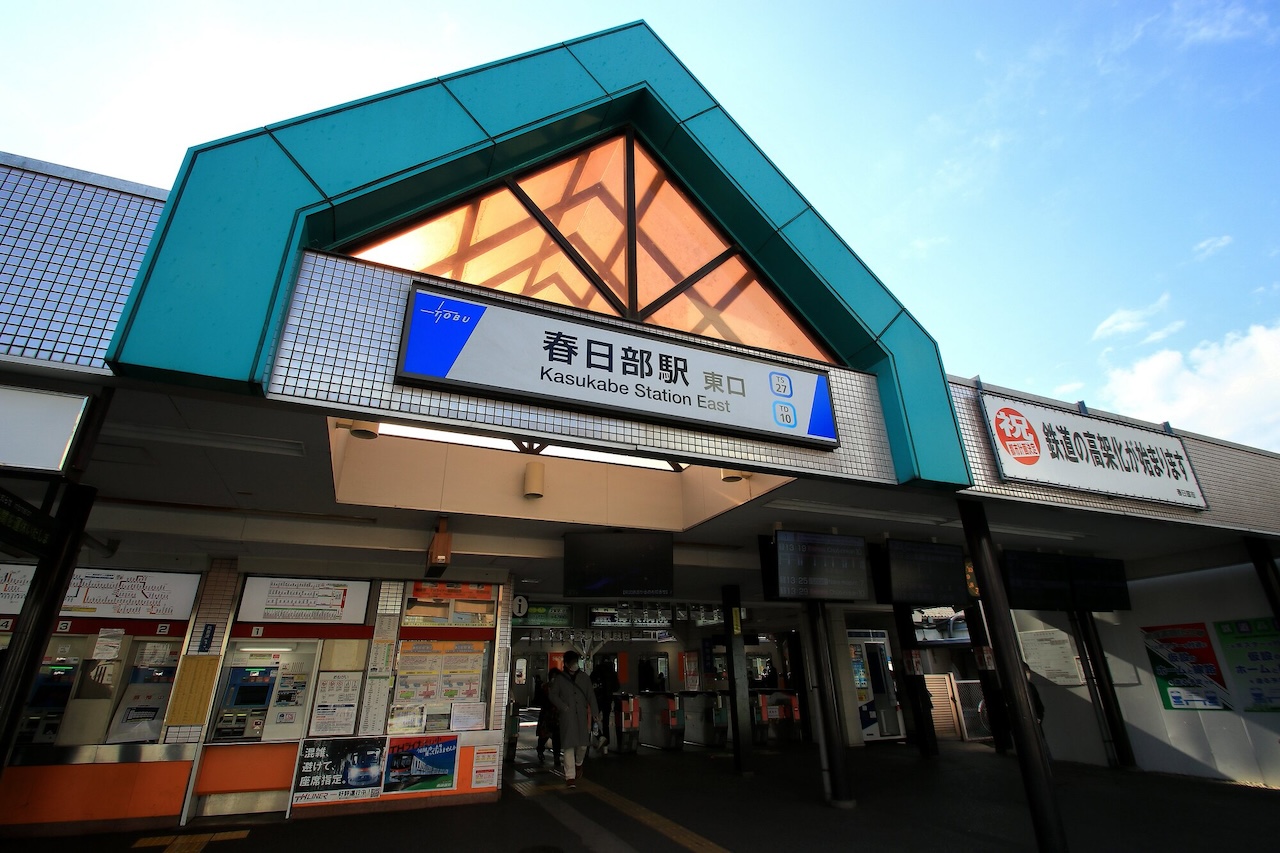
Once a thriving post town along the Nikko Kaido, Kasukabe City has long been a center of craftsmanship since the early Edo period (1603–1868). It started when artisans who came to build Nikko Toshogu Shrine discovered the area’s exceptional paulownia wood and began crafting everyday goods out of it. Over generations, these goods evolved into the renowned traditional craft Kasukabe is known for today.
This guide highlights Kasukabe’s traditional crafts and introduces workshops where you can experience them firsthand. Under the guidance of skilled artisans, create your own one-of-a-kind piece and take home a part of Japan’s craftsmanship heritage!
Oshie-Hagoita – Every Piece Is a One-of-a-Kind Handcrafted Masterpiece
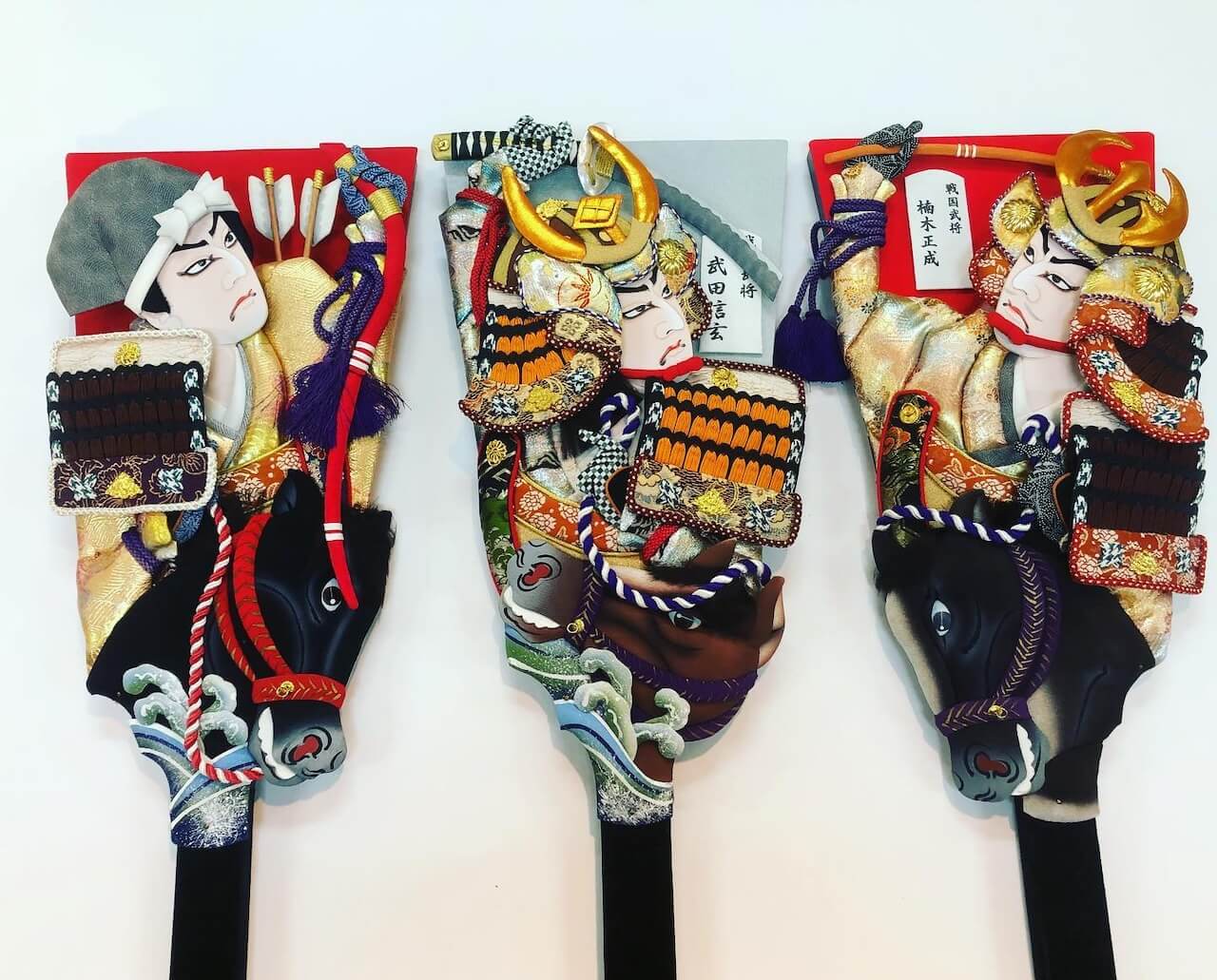
During Japan’s Muromachi period (1392–1573), people enjoyed a game that involved using a paddle called a “hagoita” to hit a shuttlecock. The sound produced by striking the shuttlecock was believed to ward off bad omens, gradually imbuing the hagoita with an auspicious meaning. As a result, the board evolved into a lucky decoration, and to this day, it is customary to give a hagoita to newborn girls to help drive away evil spirits.
As for “oshie,” it is a kind of patchwork art that originated from aristocrats during the Edo period. These were three-dimensional pieces crafted by wrapping thick paper in cloth and stuffing it with cotton, featuring a variety of motifs such as sunrises, the Seven Lucky Gods, and kabuki actors.
Over time, the combination of these two traditions gave rise to what is now known as “oshie-hagoita.”
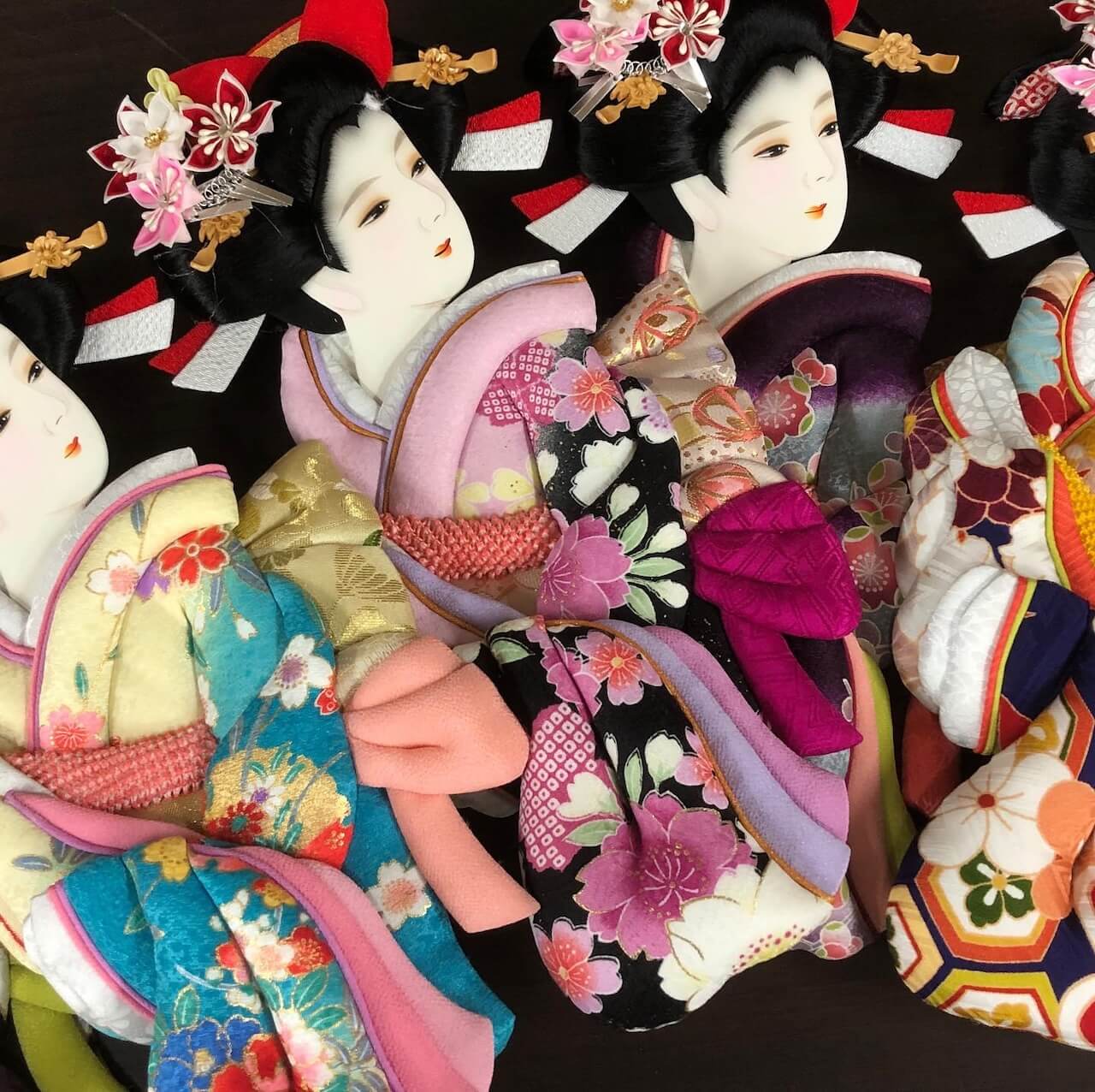
During World War II, oshie artisans from Tokyo’s Asakusa district fled the air raids and relocated to Kasukabe, where they discovered the area’s exceptional paulownia wood. This marked the beginning of Kasukabe’s oshie-hagoita tradition.
Each piece is a collaboration between oshie-shi (decorative artists) and menso-shi (face painters). Together, they go through 50 to 70 different materials in a process that involves around 200 meticulous steps, all done by hand. The lively facial expressions and intricate details of the works they create elevate oshie-hagoita to a form of fine art.
Recognizing their cultural significance, Saitama Prefecture designated oshie-hagoita as a Traditional Craft in 1977.
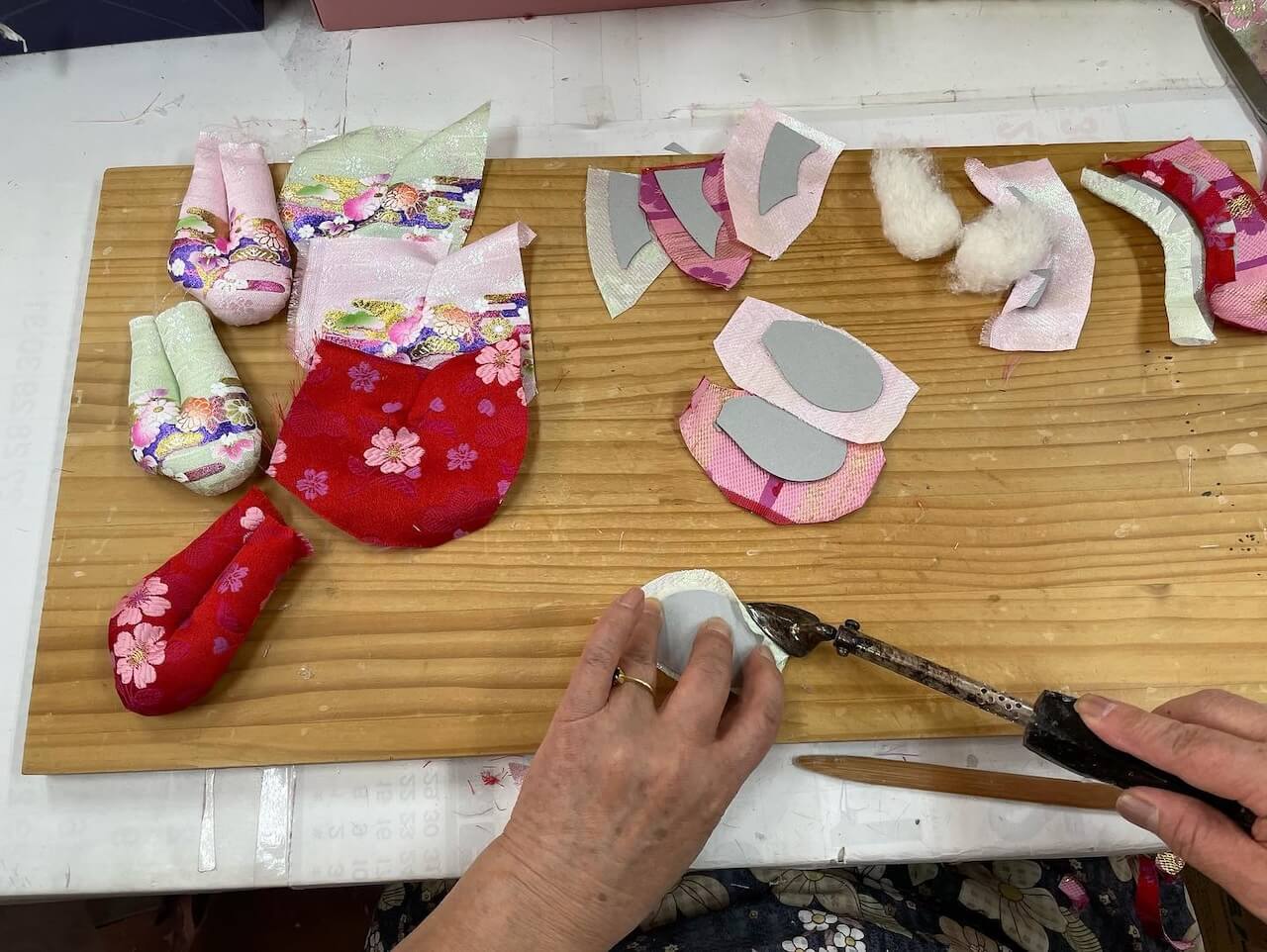
If you’d like to witness the oshie-hagoita crafting process firsthand, we recommend taking a tour at Mizuno Seisakujo (Edo Katsu). Here, you can observe master artisans at work and even create your own oshie box by pressing a kabuki-inspired design onto a paulownia box, which you can take home as a personalized souvenir.
Mizuno Seisakujo (Edo Katsu)
Address: 1727, Fujitsuka, Kasukabe-shi, Saitama
Access: About a 10-minute walk from Fujino-Ushijima Station on the Tobu Urban Park Line
Website: http://www.hagoita.jp/
The Ultimate Craftsmanship – Kasukabe’s 350-Year Legacy of Paulownia Chests
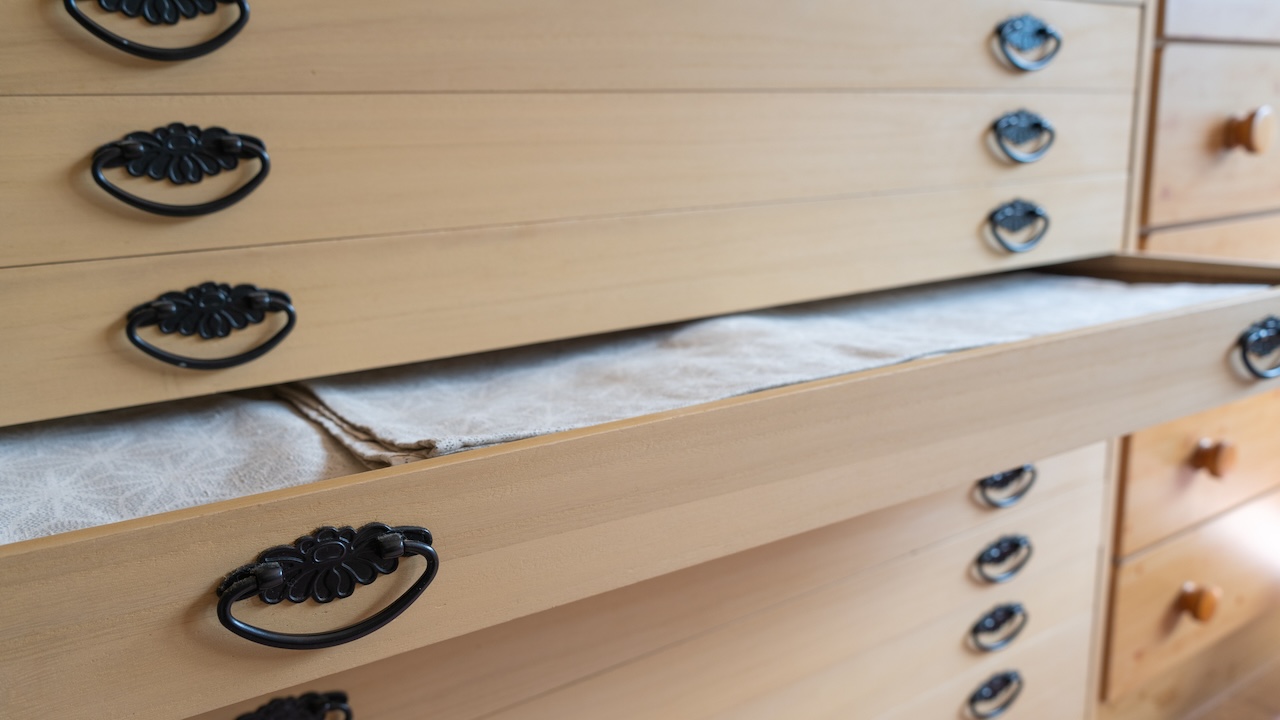
As mentioned earlier, artisans who worked on Nikko Toshogu Shrine settled in Kasukabe over 350 years ago and began crafting household goods using the region’s abundant paulownia wood.
Paulownia wood is prized for its unique qualities: lightweight yet incredibly durable, with a fine, elegant grain. Naturally resistant to moisture, insects, and mold, it is ideal for storing clothes, jewelry, and valuables. Its high fire resistance adds to its practicality, making paulownia chests both functional and long-lasting.
Kasukabe’s paulownia chests are known for their simple yet refined aesthetic. Crafted with precision, they are assembled without metal fittings, preserving the wood’s natural warmth and beauty.
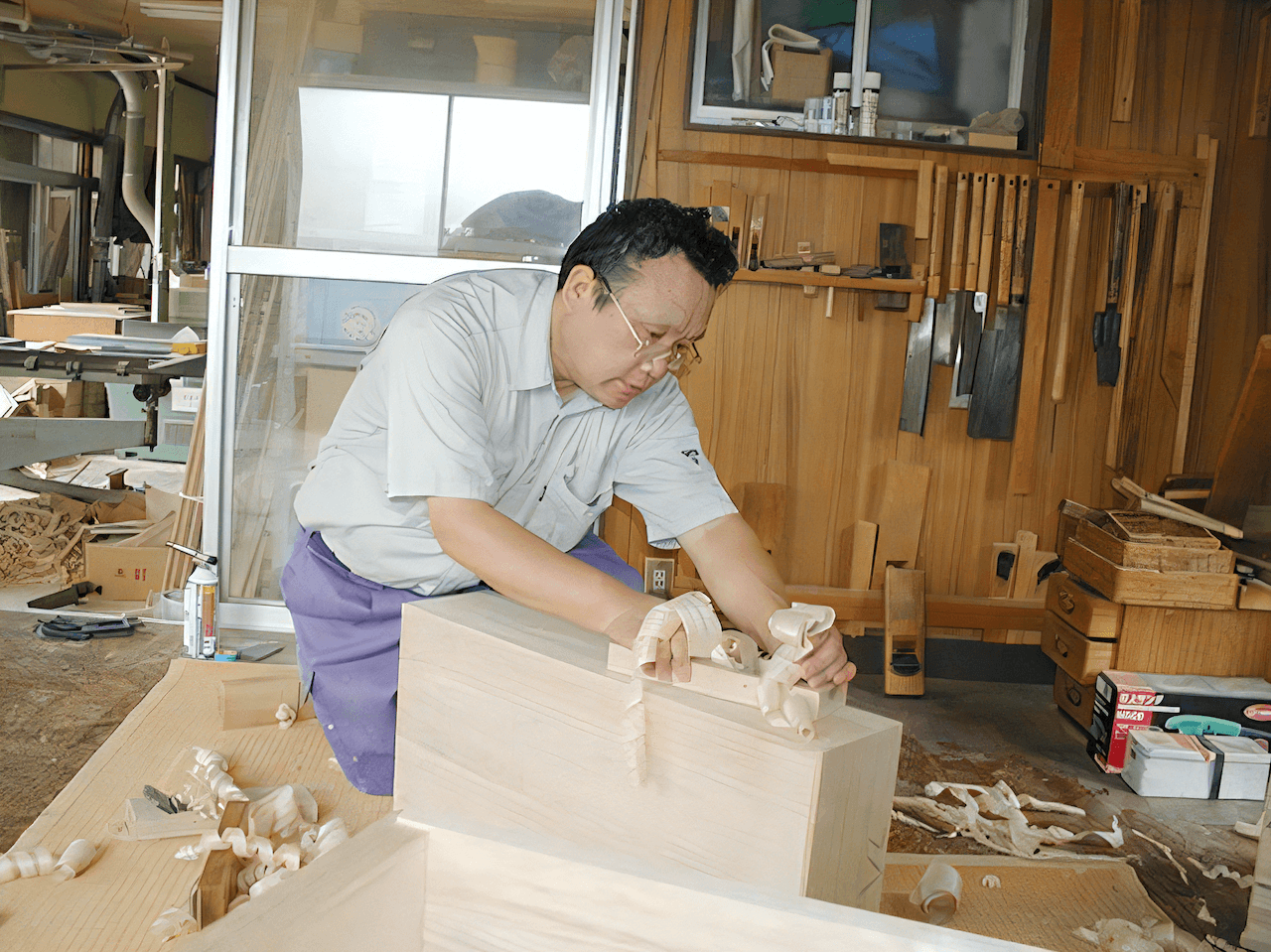
At Iijima Kiri Tansu Seisakujo, a Saitama Prefecture-designated Traditional Craft Model Factory, visitors can learn about the entire process of crafting Kasukabe’s paulownia chests—from cutting and drying the lumber to shaping, refining, and assembling the final product. You can also try your hand at adjusting or coloring a miniature paulownia chest, which you can take home as a unique keepsake or a stylish storage box for small treasures.
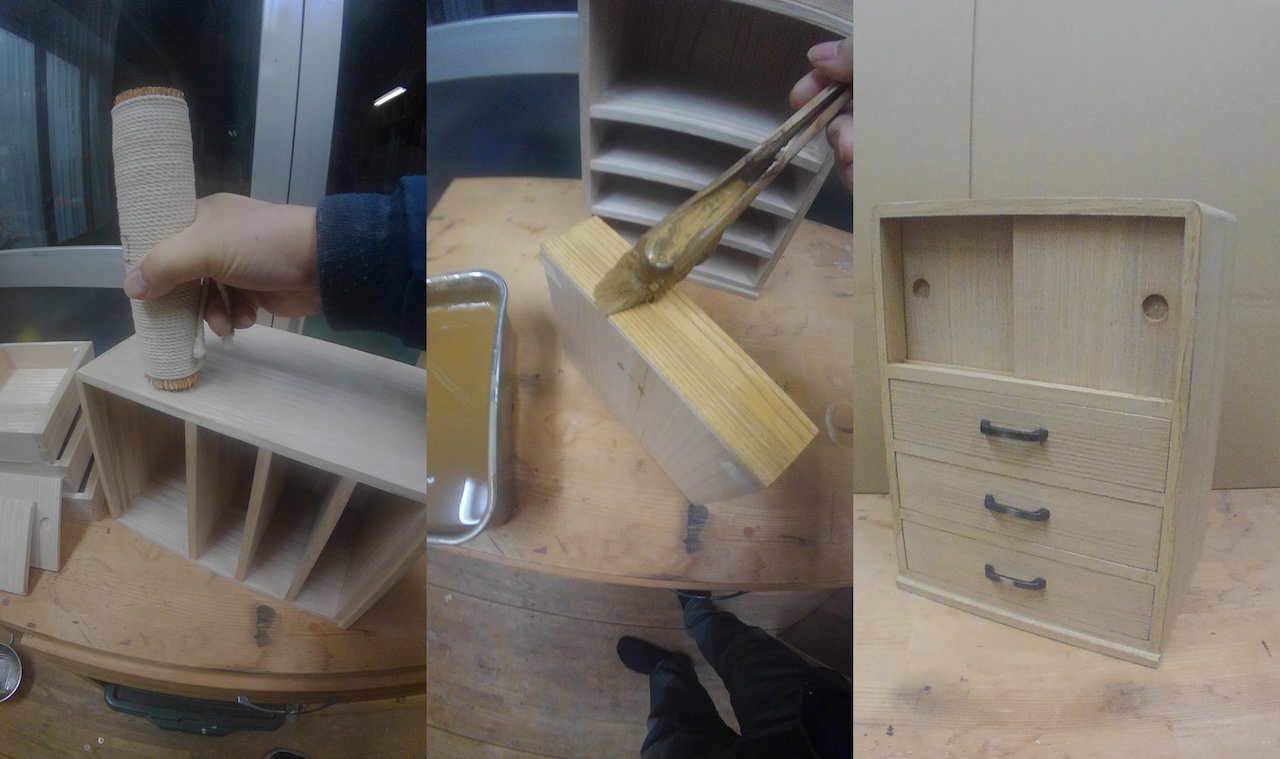
Iijima Kiri Tansu Seisakujo
Address: 1-1-9, Toyono-cho, Kasukabe-shi, Saitama
Access: About a 15-minute bus ride from Kasukabe Station on the Tobu Urban Park Line
Website: http://www.iijimakiritansu.com/
After Crafting, Explore These Must-Visit Spots in Kasukabe
Exploring Kasukabe isn’t just about experiencing traditional craftsmanship—it’s also about discovering unique local attractions! Here are three must-visit spots in the area.
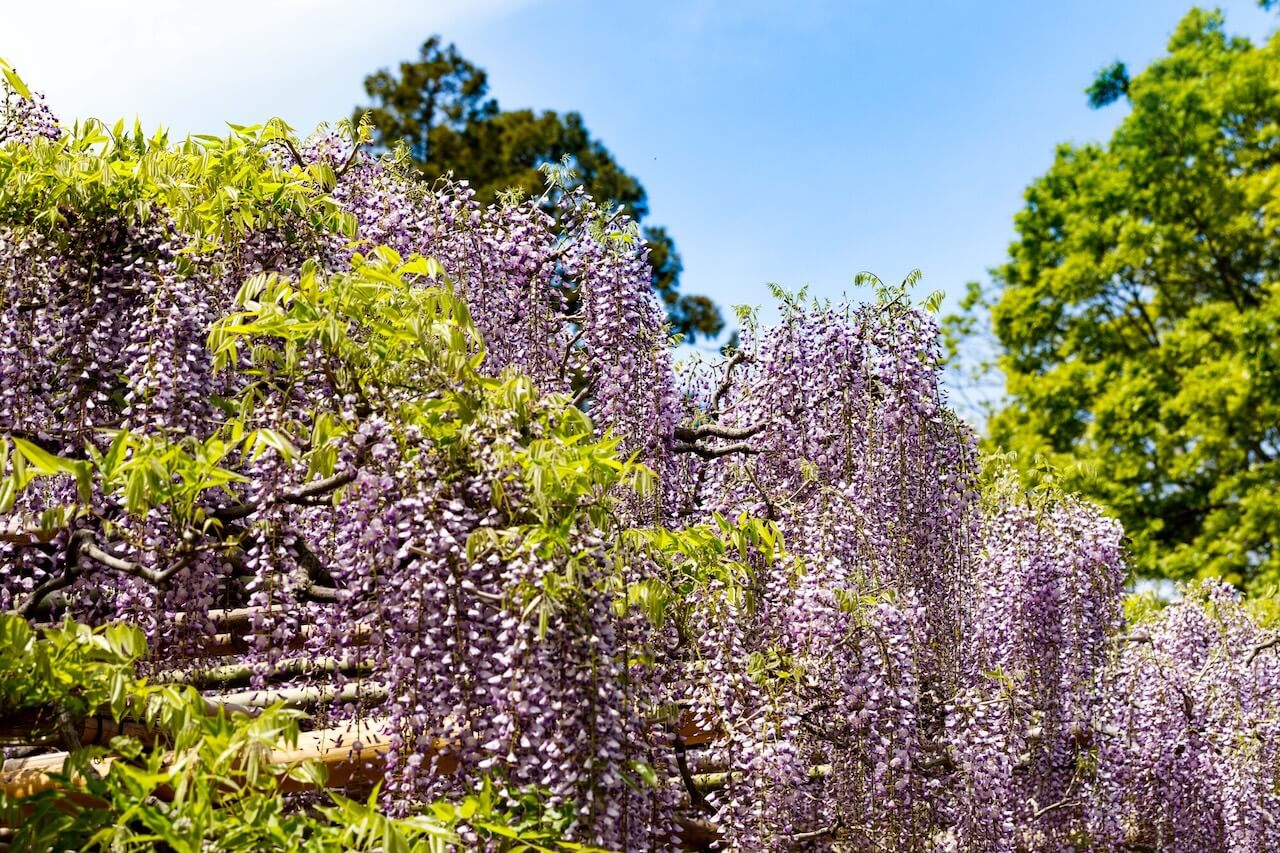
A Stunning Three-Week Bloom: The Wisteria of Ushijima
Located within Tokaen Garden, the Ushijima wisteria is one of Japan’s largest and most magnificent, with a history of over 1,200 years. Its roots spread across approximately 10 square meters, while its canopy extends to 700 square meters. When in full bloom, the cascading clusters of purple flowers can reach up to two meters in length, creating a stunning display of color and elegance. Recognizing its beauty and significance, Japan has designated it as a Special Natural Monument.
The best time to visit is from mid-April to early May when the wisteria is in full bloom. During this period, the garden also features vibrant displays of irises and azaleas surrounding a pond, along with a 500-year-old pine tree that adds to the serene atmosphere. If you’re visiting in spring, don’t miss the chance to see this spectacular garden—it opens for just three weeks each year!
Tokaen Garden
Address: 786, Ushijima, Kasukabe-shi, Saitama
Access: About a 10-minute walk from Fujino-Ushijima Station on the Tobu Urban Park Line
Website: http://www.ushijimanofuji.co.jp/en/index.html
Explore the World of Crayon Shin-chan at Puratto Kasukabe
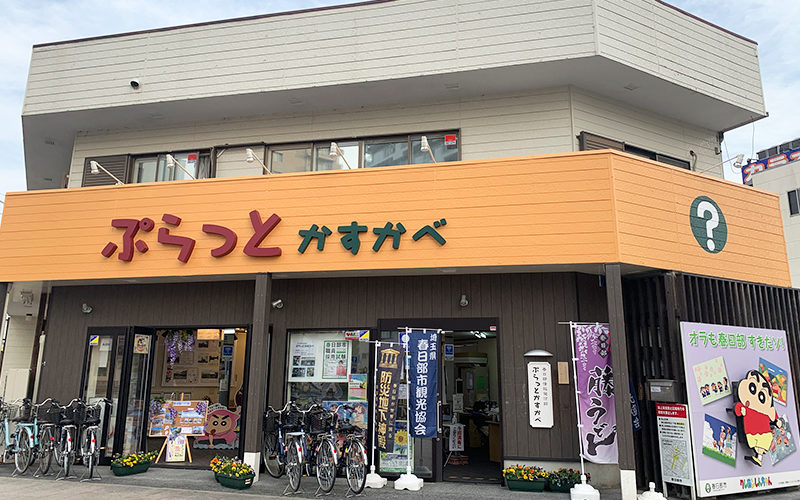
Crayon Shin-chan, the beloved manga by the late Yoshito Usui, has become a global hit through its anime adaptations and movies. The story is set in Kasukabe, where Shin-chan and his family live. For fans of the series, Puratto Kasukabe, located just a three-minute walk from Kasukabe Station, is the perfect place to start your Crayon Shin-chan pilgrimage.
Inside, you’ll find posters from past Crayon Shin-chan movies, original manga storyboards drawn by Usui, and rare production materials on display. Visitors can also rent electric bicycles to explore the city and compare real-life locations with their animated counterparts.
Kasukabe Information Center Puratto Kasukabe
Address: 1-3-4, Kasukabe, Kasukabe-shi, Saitama
Access: About a 3-minute walk from Kasukabe Station on the Tobu Urban Park Line
Website: http://www.visit-kasukabe.jp/sp_pratkasukabe.html
The Underground Temple - The Metropolitan Area Outer Underground Discharge Channel
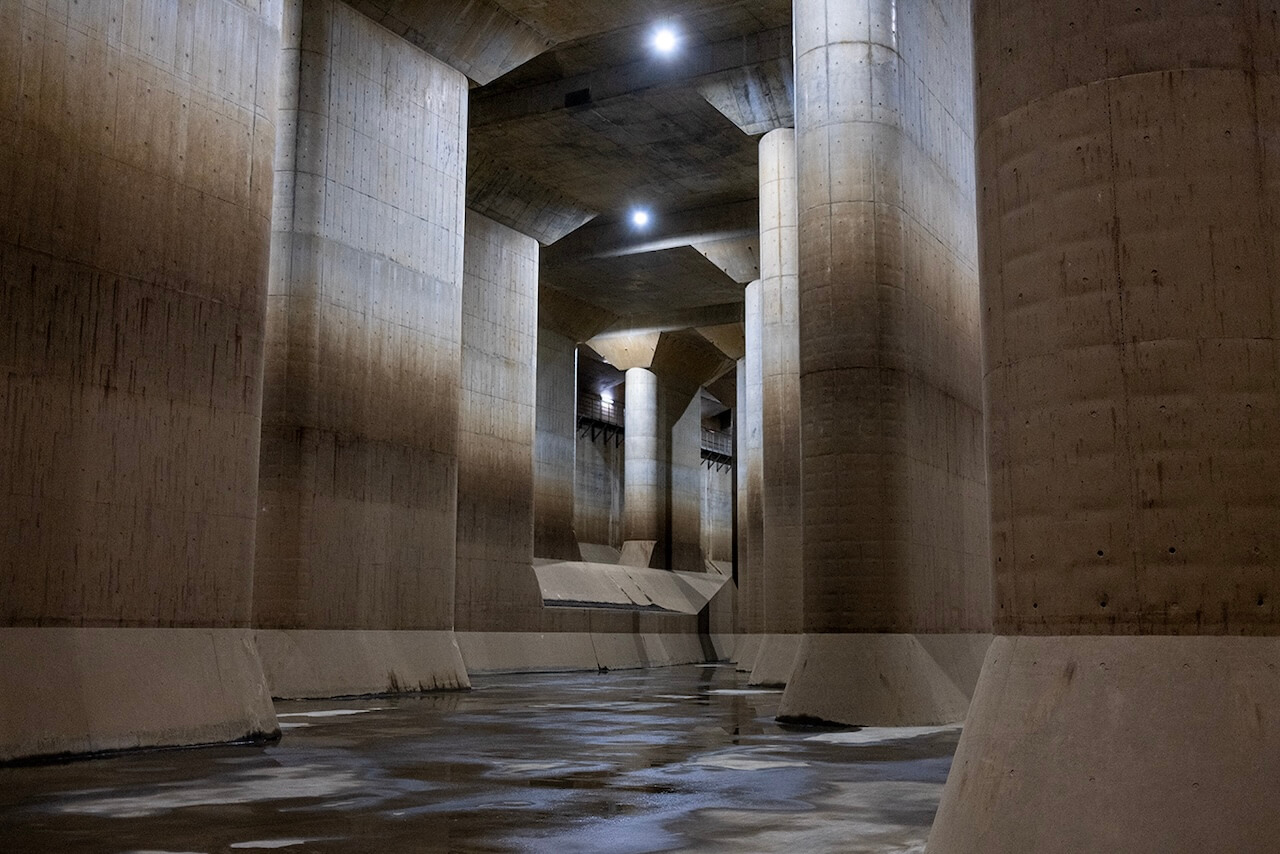
Kasukabe City is part of the Naka and Ayase river basin, surrounded by major rivers such as Tone, Edo, and Arakawa. Due to its geography, the area has long been prone to flooding. To address this, the Metropolitan Area Outer Underground Discharge Channel, a massive underground flood control system, was constructed over 13 years and completed in 2006.
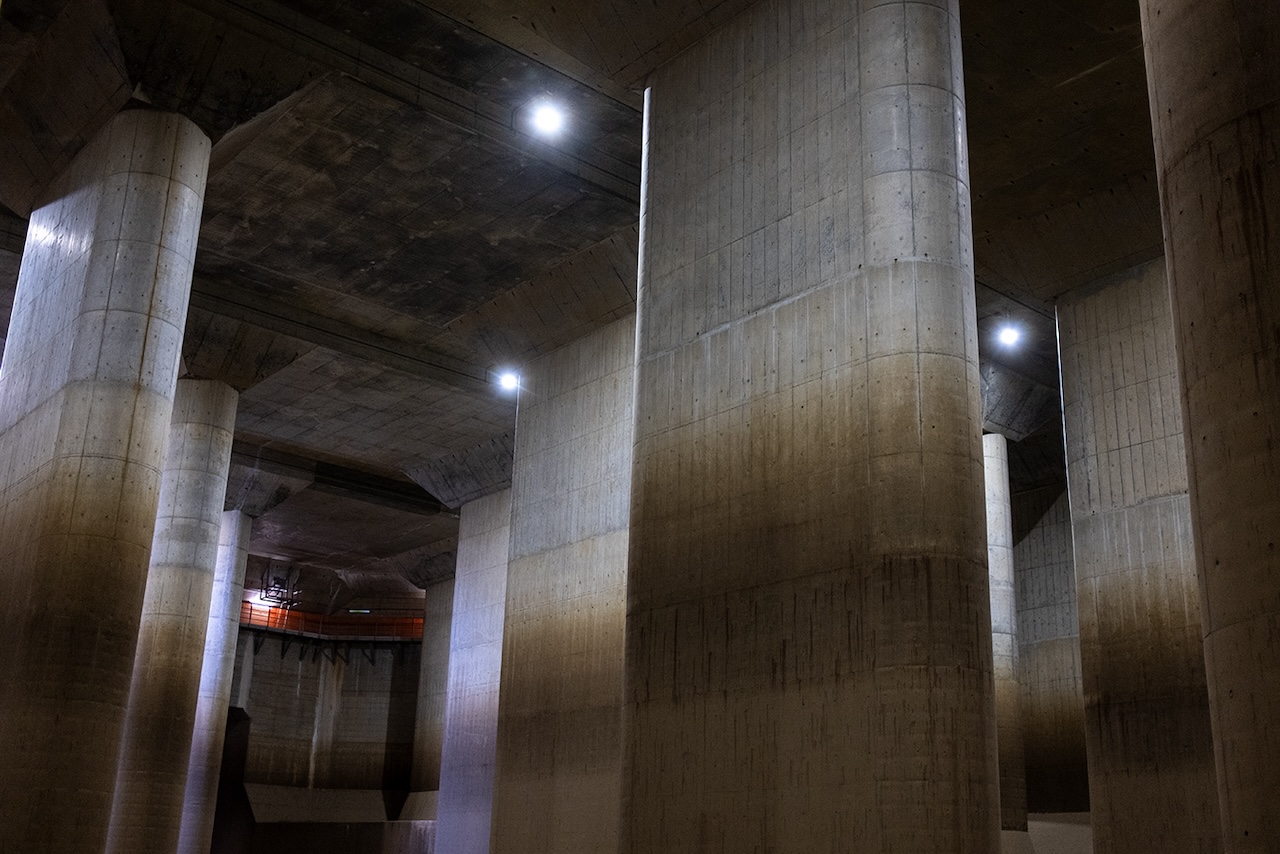
Spanning 6.3 kilometers, the system features five massive vertical storage shafts, with a pressure-adjusting water tank near the first shaft that is designed to regulate the flow before releasing excess water into the Edo River. The immense pillars within this underground space have earned it the nickname “The Underground Temple”, and it is frequently used as a filming location for movies and dramas. Visitors can join guided tours of the facility, with four different courses available, including one that allows you to step into the underground temple itself. The sheer scale of the space, with its 59 towering columns standing 18 meters high, is truly awe-inspiring.
Underground Exploration Museum RYU-Q Kan
Address: 720, Kami Kanasaki, Kasukabe-shi, Saitama
Access: About a 25–30 minute walk from the North Exit of Minami-Sakurai Station on the Tobu Urban Park Line, or take the Kasukabe community bus “Haru Bus” and get off at Ryu-Q Kan.
Website: https://gaikaku.jp/#
Next Destination: Admire the Nature and History of Yoshimi Town!
Yoshimi Town is located on fertile plains about a 30-minute drive from Kasukabe, bordered by the Arakawa River to the east and the Ichino River to the southwest. This peaceful rural area offers a glimpse into Japan’s traditional countryside, with vast rice fields and scenic landscapes. It is also home to the well-known Yoshimi Hyakuana burial caves, a historic site that draws visitors from across the country.
In the following sections, we’ll introduce hands-on experiences and must-visit attractions in Yoshimi.
Tatami—An Essential Part of Japanese Daily Life
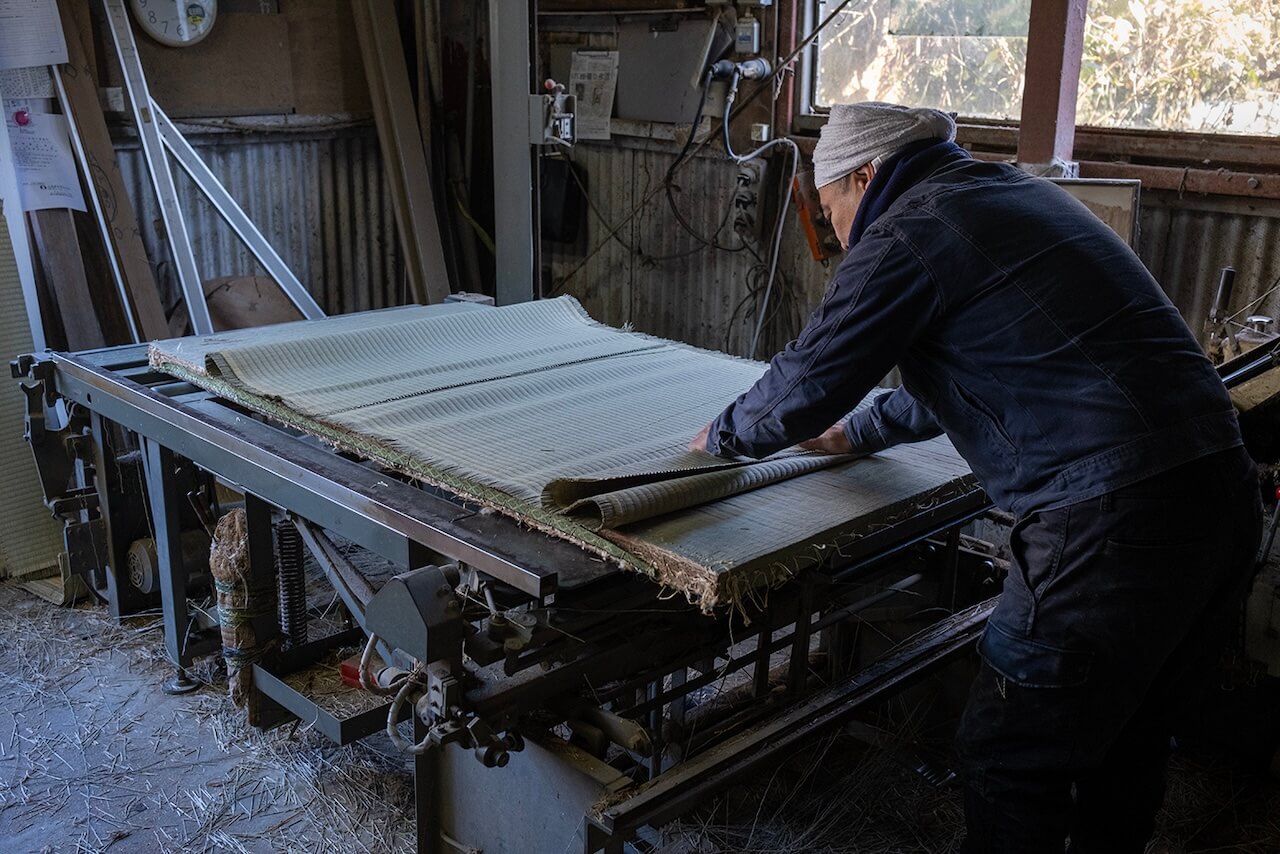
Since Japan is an island nation, it suffers from high humidity on top of extremely hot summers and cold winters, making tatami an indispensable part of its traditional homes. In Yoshimi Town, Miyazaki Tatami Shop is dedicated to preserving this time-honored craft while also offering tours and hands-on experiences, sharing the beauty of tatami-making with the world.
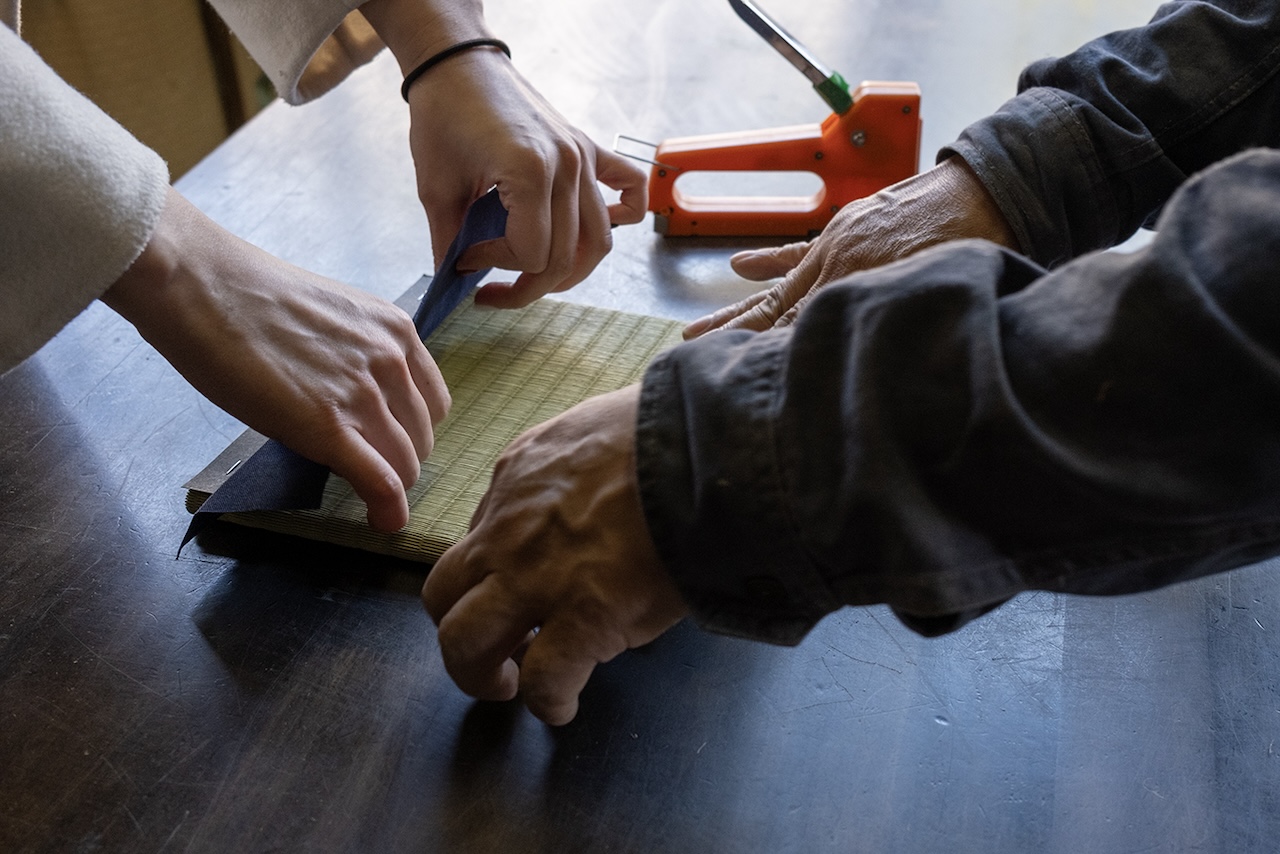
Step inside the workshop, and you’ll immediately notice the distinct fragrance of igusa (rush grass), the main material used to make tatami. Here, the owner, Miyazaki, carefully replaces worn-out tatami mats, skillfully cutting the fabric borders before exchanging the old tatami for new ones and stitching new edges with precision using specialized machinery.
You’ve likely relaxed on tatami before, but have you ever tried lifting one? Visitors to the workshop are often surprised to learn that a single tatami mat weighs around 30 kilograms, making it difficult to move without effort. The core of traditional tatami is made from tightly packed straw, a fact that many people only discover during the tour. The owner will tell you all kinds of interesting facts, such as: “With proper care, simply replacing the surface rush layer allows tatami to last for decades. It’s the ultimate example of an environmentally friendly product.”
After watching the tatami replacement process, visitors can try making their own miniature tatami mat. While the borderwork may look simple, it actually requires a bit of technique. Once finished, your handcrafted tatami makes a great keepsake—perfect for displaying plush toys, figurines, or other small decorations at home.
Miyazaki Tatami Shop
Address: 386, Jitoho, Yoshimi-machi, Hiki-gun, Saitama
Access: About a 20-minute taxi ride from JR Konosu Station, JR Fukiage Station, JR Kumagaya Station, or Higashi-Matsuyama Station on the Tobu Tojo Line
Website: https://miyazakitatami.jimdofree.com/
Cherry Blossoms and Historic Landmarks – Must-Visit Spots in Yoshimi Town
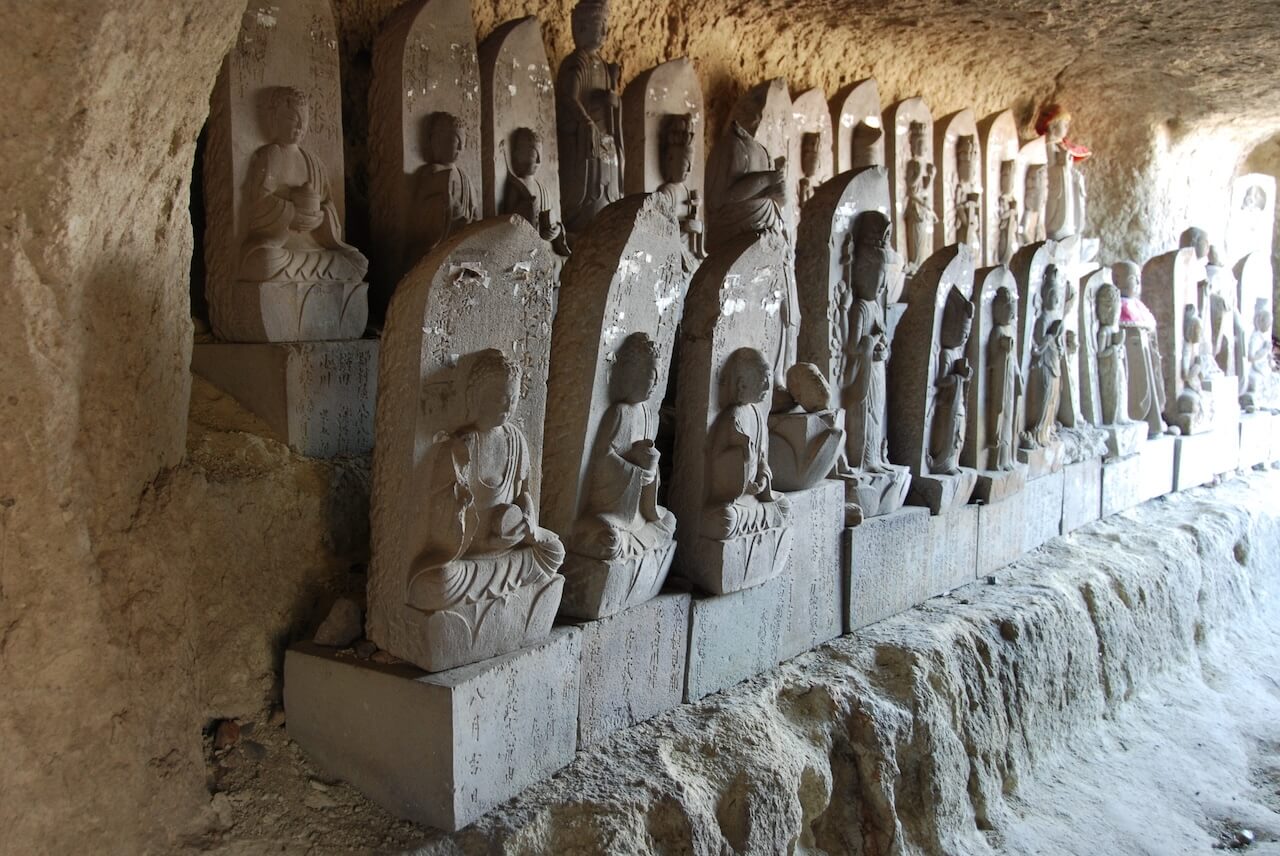
The Carved Buddhist Statues of Iwamuro Kannon-do
Carved into a rocky hillside, Iwamuro Kannon-do houses 88 stone statues of Kannon, the Buddhist deity of mercy. According to historical records, the temple was originally built between 810 and 824 during the Konin period but was later destroyed by war. The current structure was rebuilt during the Edo period.
Behind the temple, a heart-shaped opening in the rock is said to bring blessings for safe childbirth to those who pass through it.
Iwamuro Kannon-do
Address: 309, Kita Yoshimi, Yoshimi-machi, Hiki-gun, Saitama
Access: From Higashi-Matsuyama Station on the Tobu Tojo Line, take a Kawagoe Kanko Bus bound for Konosu Station and get off at “Hyakuana Iriguchi”, then walk 5 minutes.
Website: https://www.town.yoshimi.saitama.jp/soshiki/shogaigakushuk/7/427.html
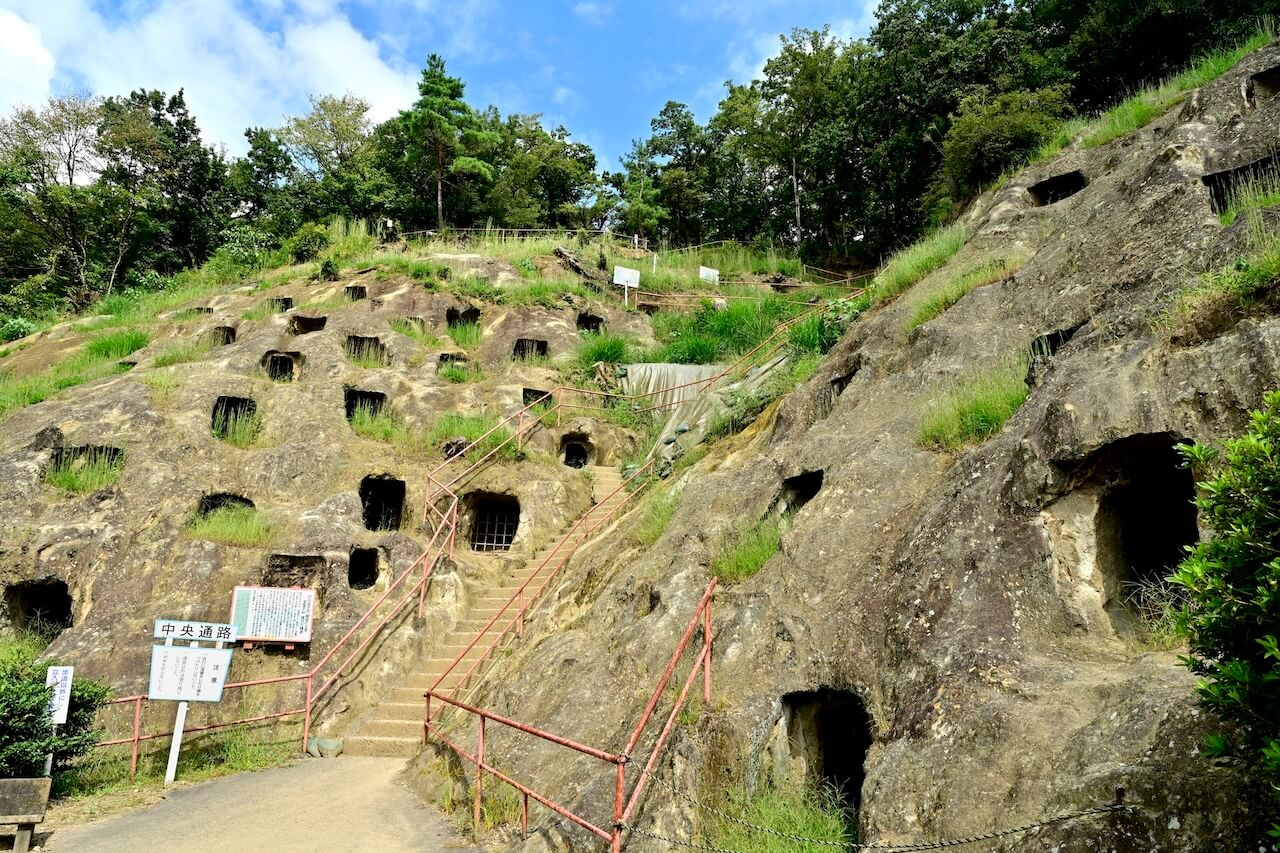
Yoshimi Hyakuana – Ancient Burial Mounds Spanning the Side of a Hill
Designated as a National Historic Site, Yoshimi Hyakuana is a cluster of 219 ancient cave tombs carved into a hillside between the late 6th and late 7th centuries. Each tomb consists of a “gen-shitsu” (main chamber for the coffin) and an “endo” (corridor connecting the chamber to the outside).
During March and April, Somei Yoshino cherry blossoms bloom around the site. A cherry blossom festival is held during this period, and at night, the cherry trees along the nearby Ichino River are illuminated, offering a breathtaking evening view.
Yoshimi Hyakuana
Address: 324, Kita Yoshimi, Yoshimi-machi, Hiki-gun, Saitama
Access: From Higashi-Matsuyama Station on the Tobu Tojo Line, take a Kawagoe Kanko Bus bound for the Driving License Center and get off at “Hyakuana Iriguchi,” then walk 5 minutes. Alternatively, from Konosu Station on the JR Takasaki Line, take a Kawagoe Kanko Bus bound for Higashi-Matsuyama Station and get off at “Hyakuana Iriguchi,” then walk 5 minutes.
Website: https://www.town.yoshimi.saitama.jp/soshiki/shogaigakushuk/7/909.html
Feel the soul of Japanese craftsmanship as you create, explore, and experience history firsthand in Kasukabe and Yoshimi!
